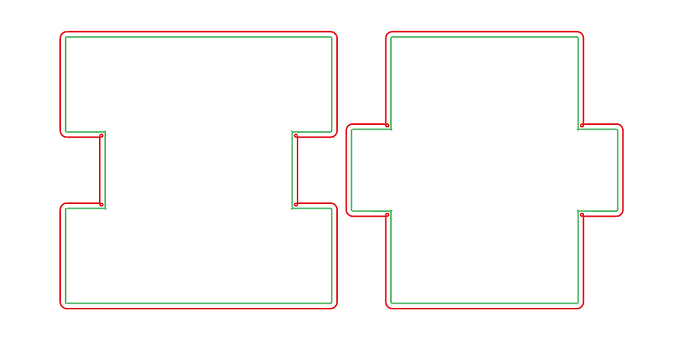yep. in that same dialogue, I set thickness to 3.2 and leave the burn at 0.1
i use the display case generator on boxes.py often. fibbing about thickness makes the tabs go into the holes much more easily
if you put in the right kerf, you don’t need to fib about thickness.
Traditionally, lying makes your nose longer. Lasers change everything!
So everything folks said is absolutely true - but for a quick and dirty - for this exactly, run all your cuts twice - it’ll widen the kerf by just a little bit, and that sounds like it’ll fix your issue with pre-made designs on this material.
How do I know before I cut it, that I need to make all the holes bigger or the teeth smaller?
Get a set of digital calipers. Harbor freight or Amazon. You can then check the width of your material.
I often trim out a small representative part of the actual design as a final test of my scaling factor despite any nuances of the design or variations in the batch of material I’m using. Usually there’s one last tweak to make things perfect.
^this^. i copy out one finger and one gap and cut those and check the fit in the actual material.
I bought a plan off of Etsy, so I assumed it would work like advertised. It does not…8-/
Yes, love that site, but in this case I bought a pre-made design off Etsy…8-\
Thank you!
You are so my brother. I had the exact same thought. ![]()
Thank you all for your input and suggestions! I just get so frustrated with snap together designs because I expect them to…snap together. What I have learned is this: all box plans are like used cars, do not trust them to work as intended. I will in the future do as suggested and just cut a couple holes and teeth to make sure they actually fit…8-]
that’s not completely fair to the sellers. they may work fine as long as you use material that is the exact thickness they specify. if your material is .13 (or even .128) instead of .125, that will make fingers not friction fit.
I absolutely love things that snap together tightly and have made several, but I still have to do this all the time. In fact had to do it a few times last night…and with my own designs, not ones that I bought from someone else. I was working with acrylic which is normally a pretty consistent thickness, but I measure it all…even Proofgrade. It can be tedious, but as far as I know it’s the only way to be successful at it.
That nose thing only works if you are made of wood.
I lie to the .py because it is an easy method to get internal mating tabs and holes like the one in the design above to easily fit even if the materials they are cut from are not the same thickness.
Proper kerf is also important. I am not saying it is not.
Proper nerfing is essential.
i’m just confused about why using oversized thickness is better (or even as good) as putting the proper kerf # in the burn setting box.
For finger joints, it is not useful at all. I was not suggesting it was.
When designing for a protruding tab from sheet “A” to fit into a slot cut from sheet “b” where the thickness is nominally 3 mm but each sheet is unique, it helps simplify things ( vs adjusting the holes in part A for the thickness of part b and visa versa).
In boxes.py the material thickness setting drives one dimension on the slot (call it height). The slot settings drive the other (call it width). Kerf helps get the width right but does not help with the height.
